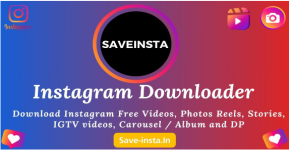 Launch apps instantly. Claim $200 credits on DigitalOcean
Launch apps instantly. Claim $200 credits on DigitalOcean
How to Create Your Own App in 2024
Written by ToXSL Technologies » Updated on: May 02nd, 2024

In today's modern age, the demand for mobile apps is going up a lot. Apps have become a big part of our daily lives, helping us with many things like work and entertainment. For people who want to start a business or create something new, making your own app can open up a lot of opportunities.
What is an app?
An app, short for application, is a computer program made to do specific things on a phone or computer. These things can be simple, like a calculator, or more complex, like a social media platform or a game.
Different types of apps
There are different kinds of apps, like ones made for specific platforms (like iOS or Android), ones you use in a web browser, and ones that mix features from both.
Platforms for app development
Mobile app development companies can choose from many tools and technologies to make apps, like software development kits (SDKs) for specific platforms, cross-platform frameworks, and web technologies.
Choosing Your App Idea
Before starting to make an app, it's important to have a good idea that solves a problem or meets a need for a specific group of people. Do research, look at trends, and come up with creative ideas.
Defining app features and functionalities
Decide what your app will do and which features are most important. Make plans and examples to guide the development process.
Creating wireframes and prototypes
Make sketches or models of how your app will look and work before starting to code. Tools like Sketch, Adobe XD, or Figma can help with this.
Setting project milestones
Break down the app development into smaller steps with realistic goals for each part. This helps you stay organized and keep track of progress.
Learning App Development Skills
Programming languages for app development
Depending on the platform you're targeting, you might need to learn languages like Swift or Objective-C for iOS, Java or Kotlin for Android, or web languages like HTML5, CSS, and JavaScript.
Online resources and courses
Use online courses and tutorials to learn app development at your own pace. Join developer communities to connect with others and get advice.
Hands-on practice and experimentation
Practice coding and try building small projects to learn and gain experience. Experiment with different tools and technologies to see what works best for your app.
Selecting App Development Tools
Integrated Development Environments (IDEs)
Choose a development tool that supports the languages you're using and has features like code editing and debugging. Popular IDEs include Xcode for iOS and Android Studio for Android.
App-building platforms and frameworks
Explore tools that make app development easier by providing pre-made components and templates. Options like Firebase, AWS Amplify, React Native, and Flutter can speed up development.
Version control systems
Use a system like Git to track changes to your code and collaborate with others. Platforms like GitHub, GitLab, or Bitbucket offer hosting services for your code.
Designing Your App
User interface (UI) design principles
Focus on making your app easy to use and visually appealing. Follow design principles like consistency and simplicity to make sure your app works well on different devices.
Graphic design elements
Use colors, typography, icons, and images to create a look for your app that matches its purpose. Pay attention to details like spacing and contrast to make important information stand out.
Creating a consistent user experience (UX)
Design workflows and navigation that guide users through your app smoothly. Test your designs with real users to find and fix any problems before you launch.
Coding Your App
Translating design into code
Turn your design ideas into working code, following best practices for your platform and language. Write clean, organized code that's easy to understand and maintain.
Writing clean and efficient code
Make sure your code is well-organized and efficient, following standards and patterns that make it easier to work with. Use comments and documentation to explain complex parts of your code.
Testing and debugging
Test your app on different devices and operating systems to find and fix any bugs or problems. Use tools to help you track down and solve issues before you release your app.
Testing Your App
Types of testing
Test your app in different ways, like testing individual parts, how they work together, and how real users interact with your app.
Testing tools and methods
Use tools like XCTest, JUnit, or Mockito to automate testing and make it easier to find problems. Use methods like Scrum or Kanban to keep testing and improving your app throughout its development.
Gathering feedback and making improvements
Ask people to try your app and give feedback. Use their suggestions to make your app better before you release it.
Preparing for Launch
App store rules and requirements
Make sure your app meets the rules and requirements of app stores like the Apple App Store and Google Play Store. Fix any issues before you submit your app for review.
App store optimization (ASO) strategies
Make your app stand out in the app store by using keywords, good descriptions, and high-quality images. Keep track of how your app is doing and make changes to improve its visibility.
Marketing and promotion plans
Plan how you'll let people know about your app and get them to download it. Use social media, advertising, and other methods to reach potential users.
Launching Your App
Submitting your app to app stores
Follow the rules for submitting your app to app stores and make sure you have all the necessary information ready.
Monitoring app performance and user feedback
Keep an eye on how your app is doing after you launch it. Pay attention to how many people are downloading it, how often they use it, and what they say about it.
Iterating based on user data
Use data from your users to make your app better over time. Look for patterns in how people use your app and use that information to improve it.
Post-Launch Strategies
Continued support and updates
Keep your app up to date with bug fixes and improvements. Release updates regularly to keep your app fresh and competitive.
Engaging with users through feedback channels
Encourage users to give you feedback on your app. Listen to what they say and use it to make your app better.
Analyzing app metrics for growth opportunities
Keep track of how your app is doing and look for ways to make it better. Pay attention to things like how much it costs to get a new user, how long they keep using your app, and how often they buy things in it.
Monetization Strategies
In-app purchases
Let users buy things in your app to make money. Offer special features or content to encourage them to spend money.
Subscriptions
Offer subscriptions to your app to make money regularly. Give people different options for how much they want to pay and what they get for it.
Advertising
Show ads in your app to make money. Make sure the ads are relevant to your users and don't get in the way of using your app.
Scaling Your App
Handling more users
Make sure your app can handle lots of users at once. Use cloud services to automatically add more resources when you need them.
Adding more features
Keep improving your app by adding new features. Listen to what your users want and make changes based on that.
Making your app faster and more reliable
Keep your app running smoothly by making it faster and more reliable. Pay attention to how it's performing and make changes to make it better.
Conclusion
Creating your own app in 2024 is an exciting journey filled with challenges and opportunities. By following this ultimate guide, you can navigate the app development process with confidence and bring your innovative ideas to life. Whether you're a seasoned developer or a novice entrepreneur, building a successful app requires dedication, creativity, and a willingness to learn and adapt to the ever-changing digital landscape.
FAQs
How long does it take to create an app?
The timeline for app development varies depending on factors like complexity, features, platform, and team size. Simple apps can be built in a matter of weeks, while more complex projects may take several months or even years to complete.
Do I need to know how to code to create an app?
While coding skills are beneficial for app development, there are alternative approaches like no-code or low-code platforms that allow non-technical users to create basic apps without writing code. However, for more customization and control, learning programming languages is recommended.
How much does it cost to develop an app?
The cost of app development depends on various factors such as scope, complexity, features, and development resources. Basic apps can be developed for a few thousand dollars, while more advanced projects can cost tens or hundreds of thousands of dollars.
How do I market my app effectively?
Effective app marketing involves a combination of strategies such as ASO, social media marketing, content marketing, influencer partnerships, and paid advertising. It's essential to identify your target audience, understand their needs, and tailor your marketing efforts accordingly.
What are the common challenges in app development?
Common challenges in app development include technical hurdles, platform fragmentation, limited resources, changing market dynamics, and fierce competition. Overcoming these challenges requires careful planning, continuous learning, and a proactive approach to problem-solving.
Copyright © 2024 IndiBlogHub.com Hosted on Digital Ocean








Post a Comment
To leave a comment, please Login or Register